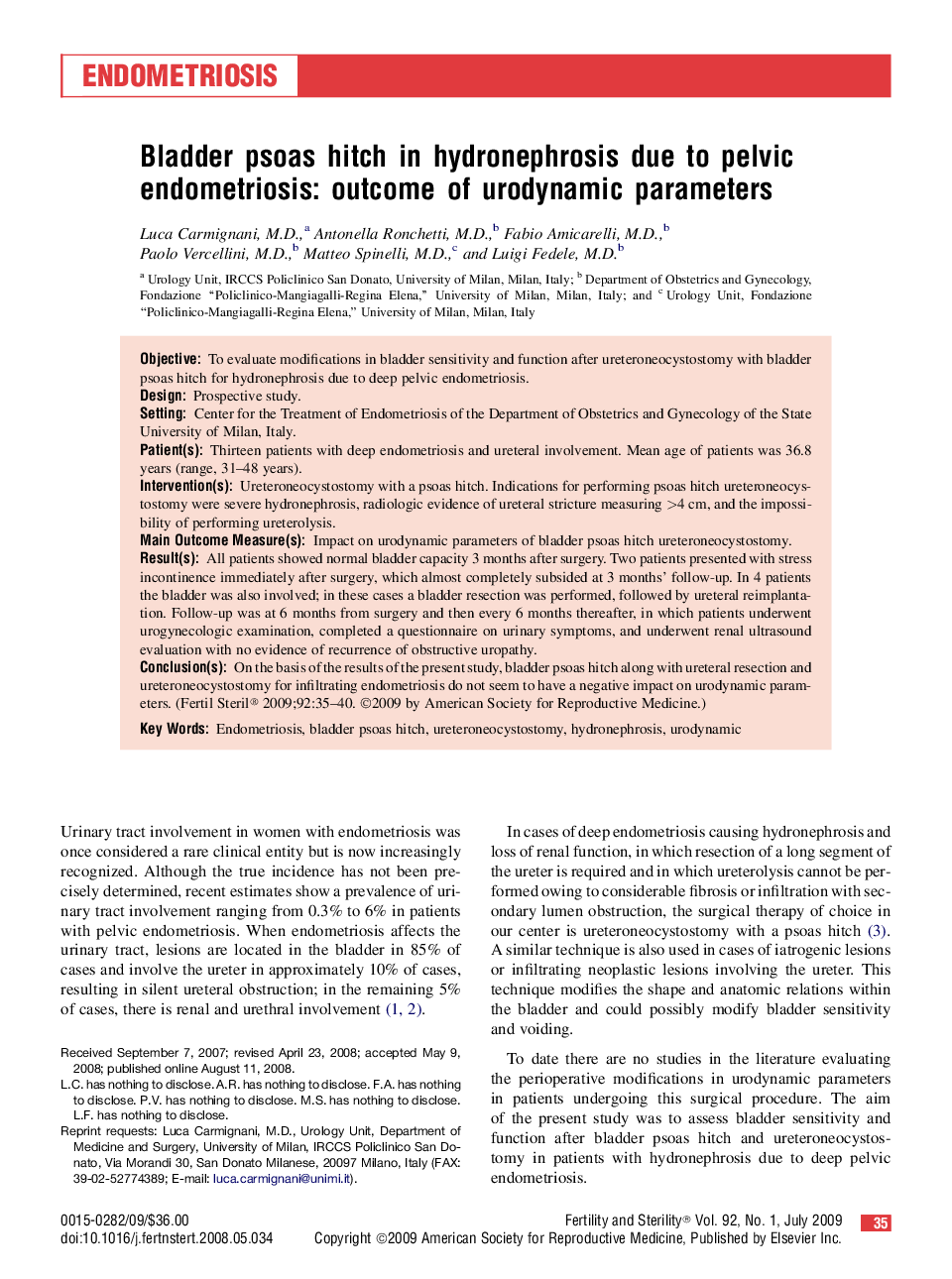| کد مقاله | کد نشریه | سال انتشار | مقاله انگلیسی | نسخه تمام متن |
|---|---|---|---|---|
| 3936838 | 1253463 | 2009 | 6 صفحه PDF | دانلود رایگان |

ObjectiveTo evaluate modifications in bladder sensitivity and function after ureteroneocystostomy with bladder psoas hitch for hydronephrosis due to deep pelvic endometriosis.DesignProspective study.SettingCenter for the Treatment of Endometriosis of the Department of Obstetrics and Gynecology of the State University of Milan, Italy.Patient(s)Thirteen patients with deep endometriosis and ureteral involvement. Mean age of patients was 36.8 years (range, 31–48 years).Intervention(s)Ureteroneocystostomy with a psoas hitch. Indications for performing psoas hitch ureteroneocystostomy were severe hydronephrosis, radiologic evidence of ureteral stricture measuring >4 cm, and the impossibility of performing ureterolysis.Main Outcome Measure(s)Impact on urodynamic parameters of bladder psoas hitch ureteroneocystostomy.Result(s)All patients showed normal bladder capacity 3 months after surgery. Two patients presented with stress incontinence immediately after surgery, which almost completely subsided at 3 months' follow-up. In 4 patients the bladder was also involved; in these cases a bladder resection was performed, followed by ureteral reimplantation. Follow-up was at 6 months from surgery and then every 6 months thereafter, in which patients underwent urogynecologic examination, completed a questionnaire on urinary symptoms, and underwent renal ultrasound evaluation with no evidence of recurrence of obstructive uropathy.Conclusion(s)On the basis of the results of the present study, bladder psoas hitch along with ureteral resection and ureteroneocystostomy for infiltrating endometriosis do not seem to have a negative impact on urodynamic parameters.
Journal: Fertility and Sterility - Volume 92, Issue 1, July 2009, Pages 35–40